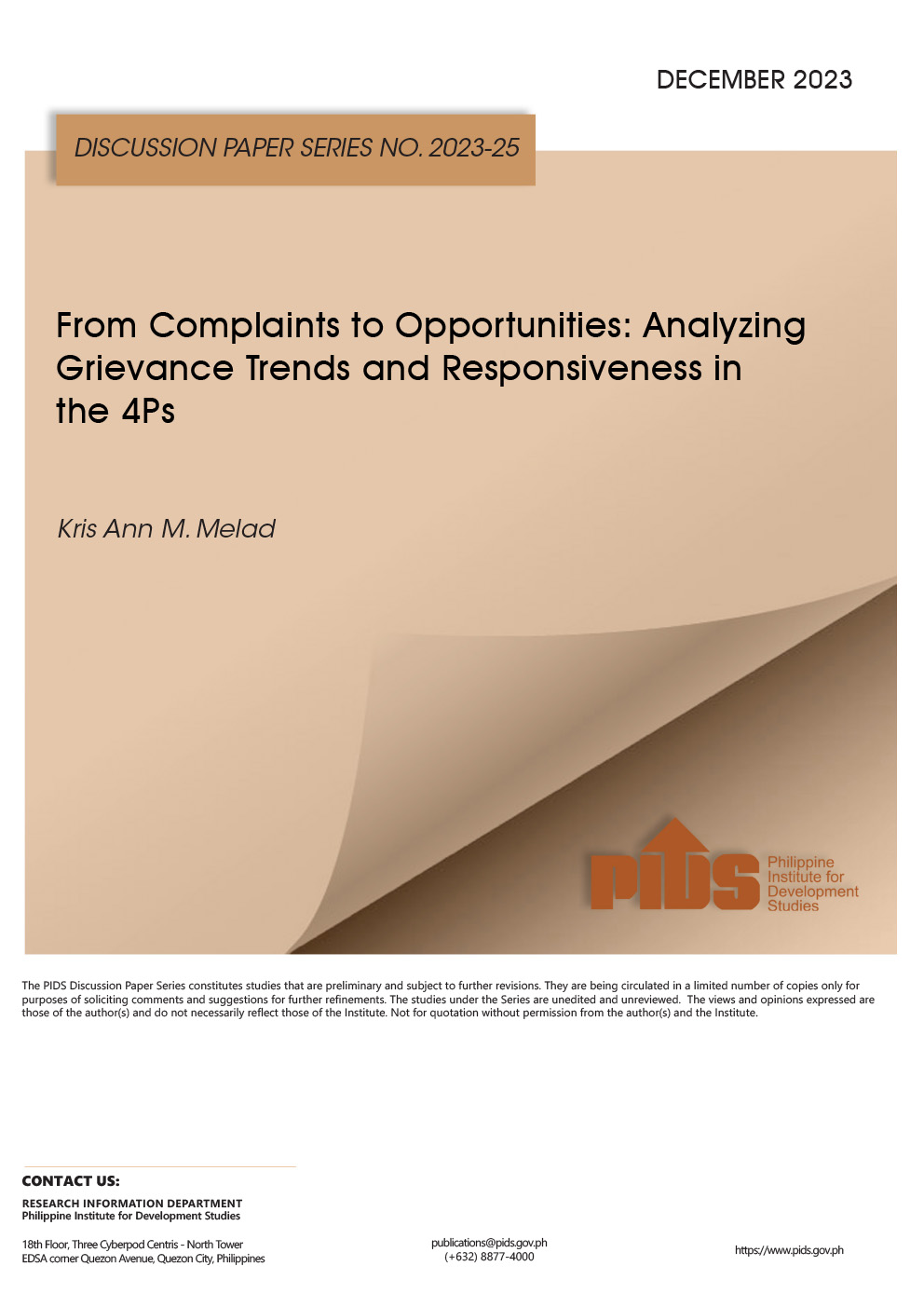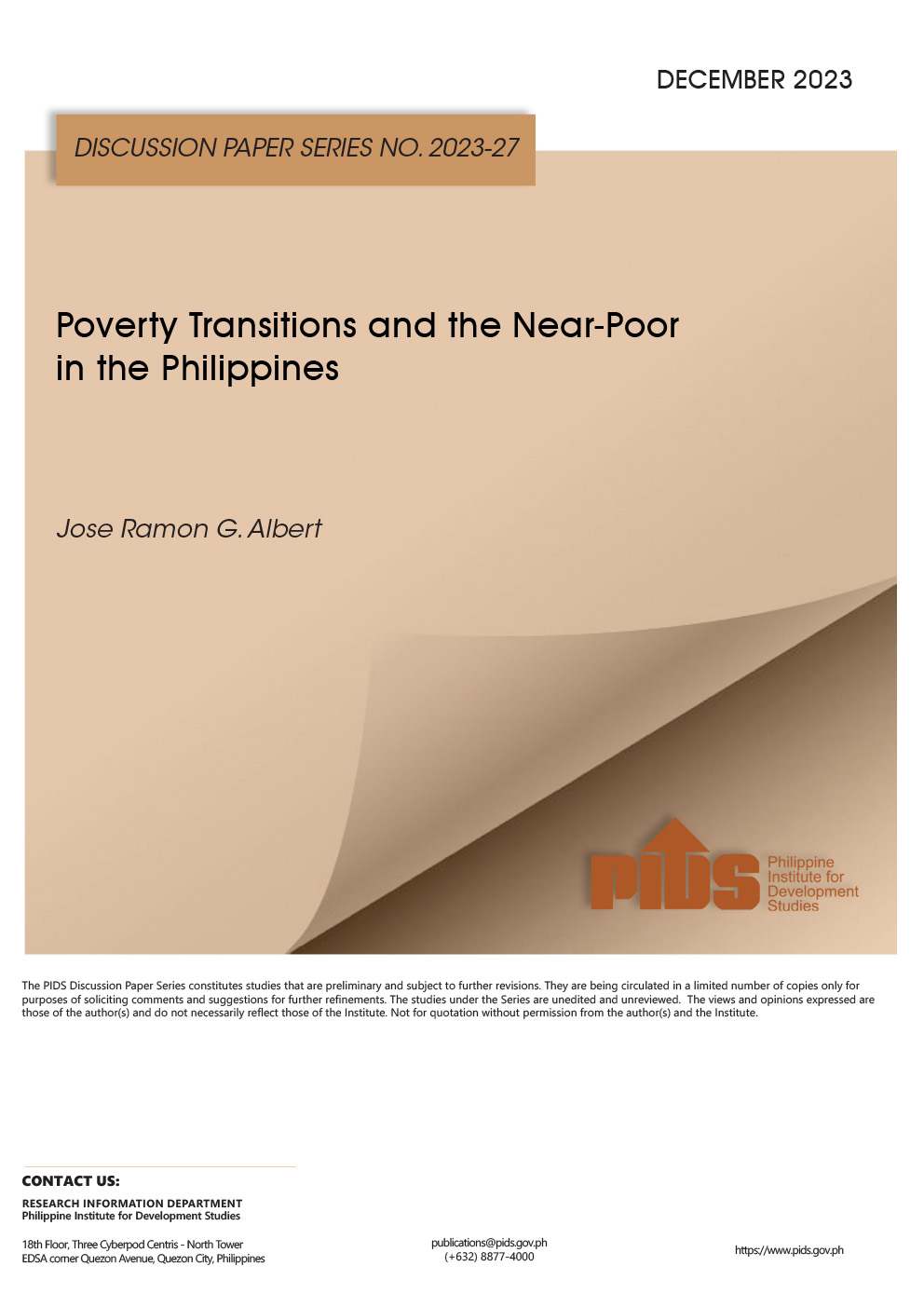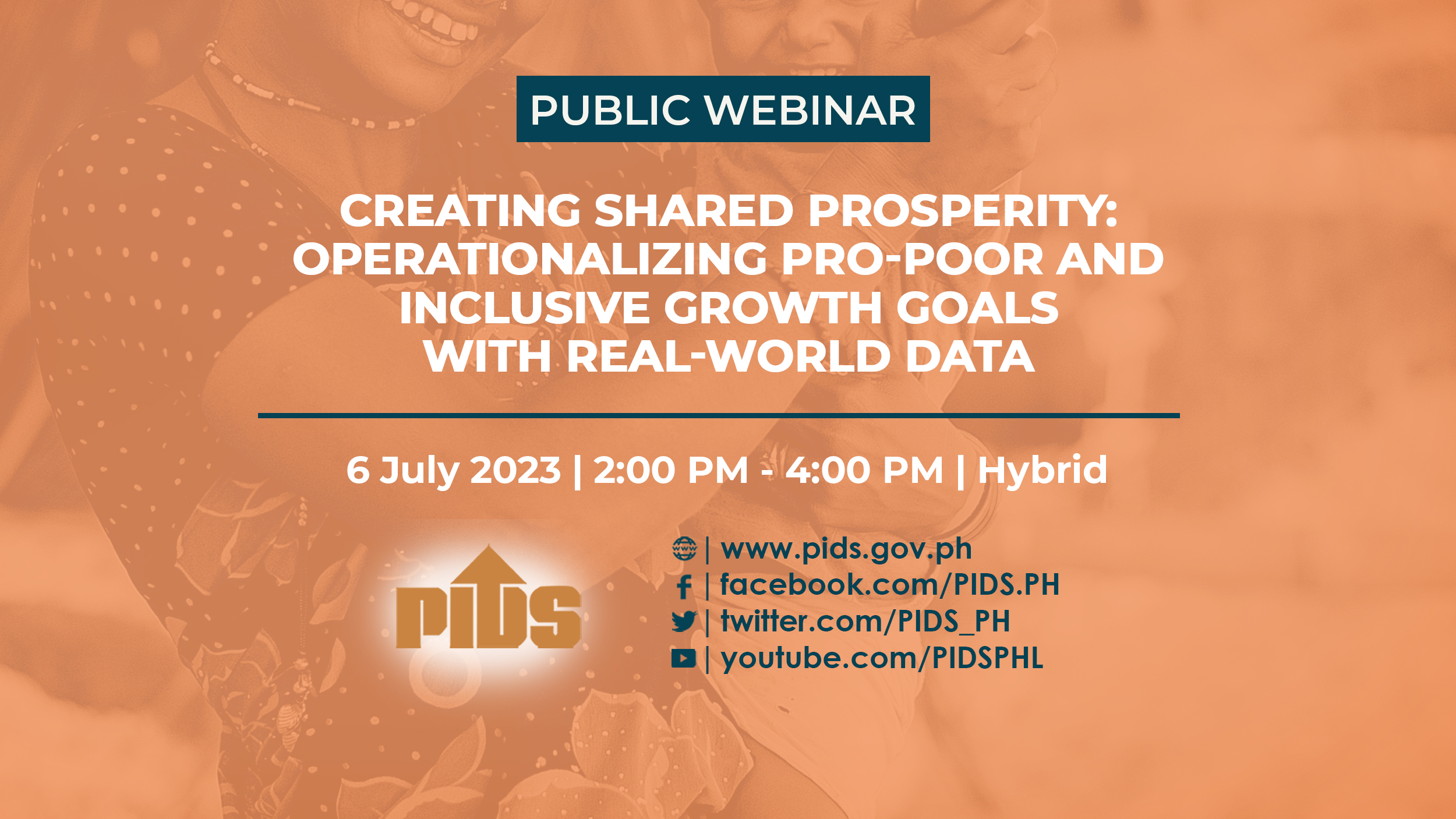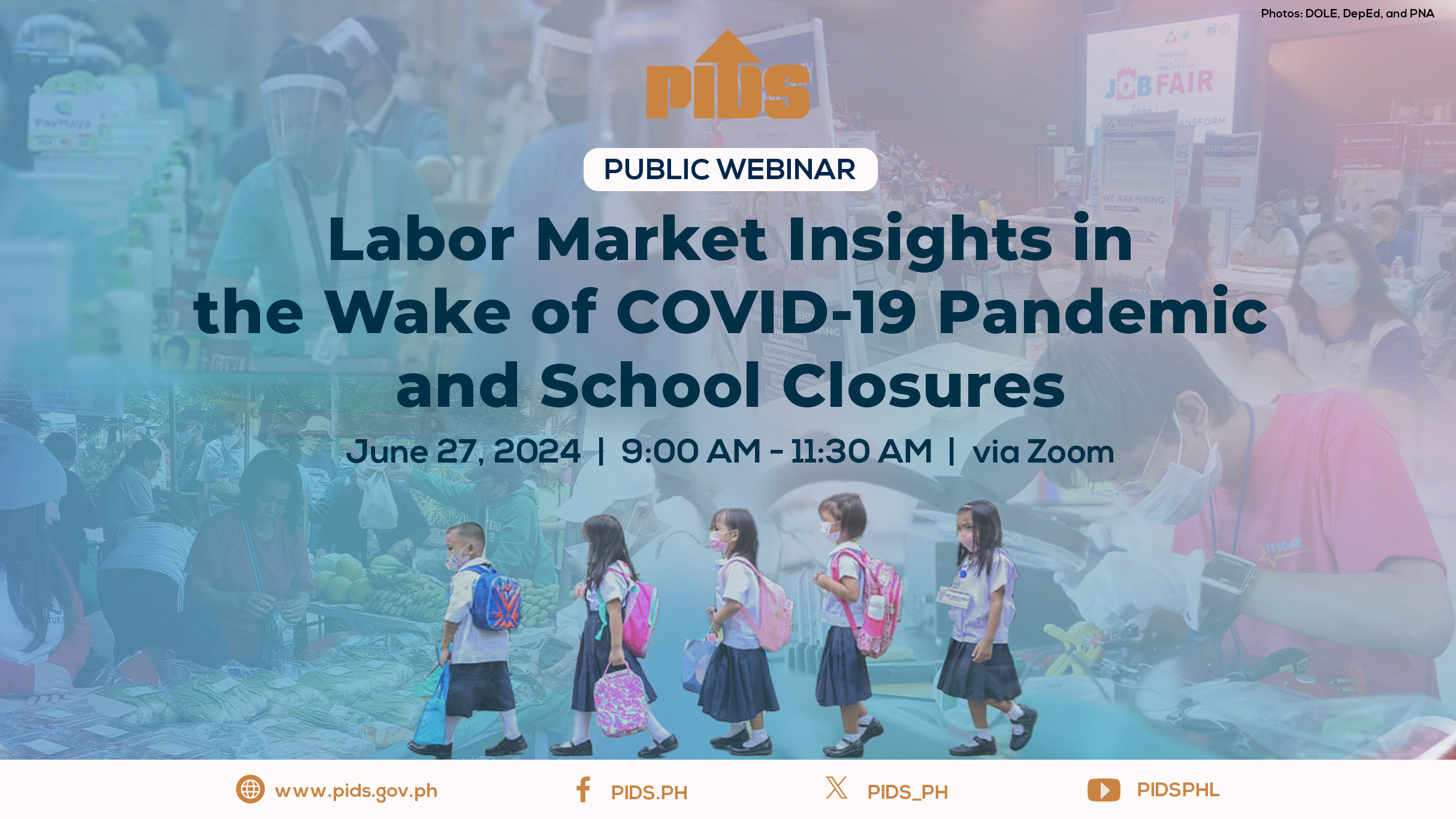THE pandemic was not the “great equalizer” that many believed it to be, as it hurt the poor more and exacerbated existing inequalities in the country, according to the Philippine Institute for Development Studies (PIDS).
At the launch of the Development Policy Research Month (DPRM) on Thursday, PIDS Senior Research Fellow Valerie Gilbert T. Ulep said more poor Filipinos than those belonging to higher-income households saw a decline in their income and lost their jobs.
Ulep said more Filipinos belonging to poor households also suffered moderate and severe food insecurity during the pandemic.
“The Covid-19 pandemic exacerbated the long-standing inequities of society,” Ulep said in a presentation. “These disparities in human capital outcomes reflect the structural inequities that persisted even before the pandemic.”
In another presentation, National Economic and Development Authority (Neda) Undersecretary for Planning and Policy Rosemarie G. Edillon said the pandemic displaced 2.2 million Filipinos and 60 percent of enterprises stopped operation.
While the unemployment rate of the bottom 40 percent and higher income households were at 10 percent in 2020, some 52.7 percent of the bottom 40 percent were wage and salaried workers compared to 60.4 percent among higher income households, Edillon said.
Further, 10.4 percent of the bottom 40 percent of households worked in family farms and enterprises without pay; and 34.8 percent of those in the bottom 40 percent were self-employed without any paid employees.
“There are actually less percentage of workers who are employed as wage and salaried workers, especially if you consider those working for private establishments, in working for governments. And that’s also one of the reasons why they are more vulnerable to economic risks,” Edillon said.
Social justice
In order to address these inequalities, especially in light of the pandemic, Ulep cited a need to promote social justice which assures equal access to rights and opportunities, as well as “taking care of the least advantaged members of society.”
Social justice has five pillars—equal opportunity to access resources; voice; diversity; human rights; and equity. Given the impact of the pandemic on the Philippines, the country should focus on social justice in health; education and labor; and environment, Ulep said.
Achieving social justice in health means addressing infant mortality in the Philippines where infant mortality among poor households remain higher compared to richer households.
Infant mortality in poor households is around 30 percent while child mortality is around 40 percent. However, in the richest households, infant mortality is below 10 percent and child mortality, around 10 percent.
“The health outcomes, for example, among the poorest population in this country is similar to most countries in Sub Saharan Africa while the richest quintile, for example, is similar to many vibrant emerging economies,” Ulep said.
In order to address these, Ulep said cited a need to expand population coverage; health benefits such as primary care; and increase the support value and financial protection for healthcare.
Ulep also flagged the need for an equitable allocation of subsidies to the local government and addressing the social determinants of health in the country.
In terms of education and labor, PIDS Senior Research Fellow Ma. Christina F. Epetia cited significant disparities in education outcomes which revealed inequalities in accessing quality education.
These were exacerbated by the pandemic, Epetia said, mainly because of the country’s digital divide as well other socioeconomic challenges. She stressed that education remains critical in ensuring access to decent work as well as social mobility.
“Social mobility is the ability of people to move from poverty to greater prosperity, or vice versa, within a society,” Asian Development Bank (ADB) statisticians Arturo Martinez and Joseph Bulan said in an Asian Development Blog.
“With more equitable distribution of economic opportunities, those born into lower social classes can more easily reach higher status as their prospects are not strongly anchored to their initial socioeconomic status,” they added.
Epetia said addressing inequalities in education and employment means making quality education inclusive, relevant, and democratic. Efforts to formalize work and expand social protection schemes can pave the way toward creating decent jobs.
In terms of social justice in environment, PIDS Senior Research Fellow Sonny N. Domingo said this means addressing the country’s vulnerabilities to disasters such as cyclones, earthquakes, volcanic eruptions, terrorism, and pandemics like Covid-19.
Domingo said the Philippines ranked 1st in the 2022 INFORM Risk Index for vulnerability to natural disasters and 4th in the 2021 Global Risk Index.
“The poor and the marginalized are seen as the most vulnerable in terms of disaster risk and climate change impacts. Unfortunately, we see very limited bottom-up representation and participation from our communities and from stakeholders outside government services,” Domingo said.
“In everything that we do, in everything that the government initiatives, we go forward and try to augment our capacities within our communities,” he also said.
To address these vulnerabilities, Domingo said, the government must increase investments on climate-smart and green infrastructure across sectors, including agriculture, as well as mainstream tenets of environment and climate justice in economic development blueprints.
He recommended that marginalized groups be empowered and community representations in institutional decision-making platforms be bolstered.
Domingo also cited a need to improve national and subnational planning and fiscal management for climate change adaptation and mitigation as well as Disaster Risk Reduction Management (DRRM).
He also recommended efforts to maintain and strengthen transparency and accountability mechanisms in development projects, including extractive industries.
Licking poverty
Martinez and Bulan said crises such as pandemics can disrupt the drivers of upward social mobility. These drivers include human capital investments, credit markets, and public investments.
The ADB statisticians said poor households experience greater difficulty moving up the income ladder due to shocks compared to well-off households. However, if economies are able to get back to their pre-shock growth prospects, in this case, pre-pandemic growth path, poverty reduction remains possible.
They said if Asian economies were able to do this, the extreme and moderate poverty rate in developing economies in Asia could be reduced to less than 1 percent and 7 percent, respectively. However, Martinez and Bulan said, about a quarter of the region’s population may remain socioeconomically vulnerable.
“It is also important to note that there are a number of uncertainties surrounding these projections. First, economic growth may be affected by looming threats of stagflation, food insecurity, energy price shocks, debt burden, geopolitical tensions, and other risk factors,” they explained.
Other uncertainties include longer-term consequences from the pandemic that have yet to come to light. One example would be the full impact of learning losses caused by school closures—such could threaten social mobility prospects of these students in the future.
Last year, Neda said the Philippine economy will take a decade to go back to its prepandemic growth path due to the lingering effects of the pandemic and the lockdowns.
Neda said the pandemic and the lockdowns imposed by the government are expected to cost the Philippine economy a total of P41.4 trillion in the next 40 years.
Neda estimated that in 2020, the economy lost P4.3 trillion and is expected to continue to lose another P37 trillion in the next 10 to 40 years.
In terms of human capital investment and returns, the losses are P11.025 trillion in education investments and P4.503 trillion in health for Covid-19 and non-Covid-19 diseases.











